It's been a while since I last tried one of Hamelman's rye loaves, so I pulled his book from the shelf and started browsing chapter 6. I have baked quite a few of his rye loaves before, but for some reason, his 70% rye with whole wheat and a rye chops soaker has escaped me up until now. The last couple of rye loaves I've baked, have been from doughs that I've composed on my own, and there's always some winging going on with regards to proper hydration and fermentation times. With Hamelman, it's safe to let one's guard down and simply roll along with his detailed directions.
This dough was remarkable to work with. It's 35% medium rye (all taken from a ripe sourdough), 35% rye chops (soaked overnight) and 30% whole wheat:
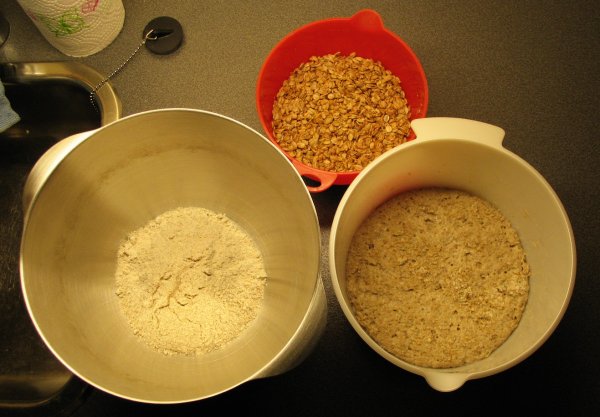
So that's the partial mise en place! I'll leave it to you to guess what the different bits are ;-) Add water, yeast and salt and you're on your way.
As I said, I think this dough was great to work with, and it came together very quickly. After a couple of minutes in the mixer, I was ready to go:
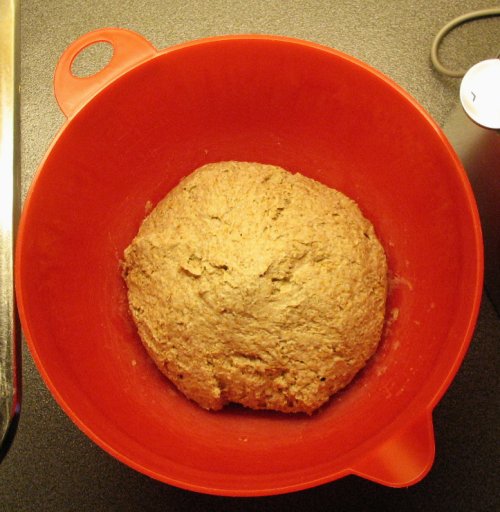
For such a high proportion of rye, and where all the medium rye flour comes from a ripe, fragrant sourdough, a meager 30 minutes is enough for bulk fermentation.
After a short bench rest, the shaped dough is put into a well floured brotform:
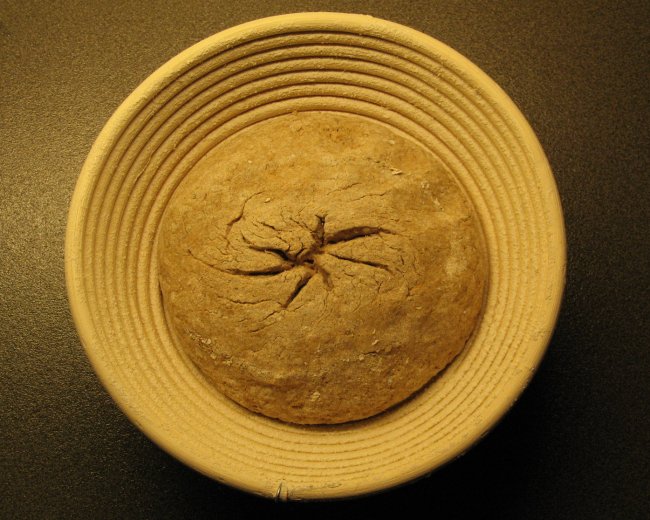
... and proofed for 55 minutes:
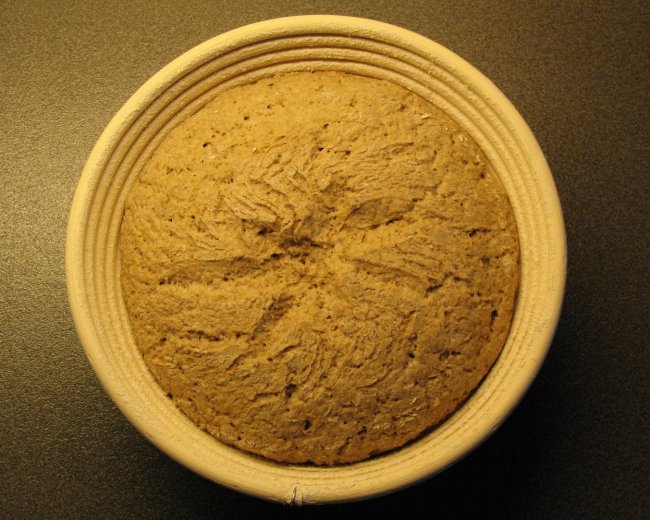
The fully proofed dough did not look at all as fragile as I would expect. As a matter of fact, it was pretty robust and kept its shape well all the way onto the scorching hot baking stone:
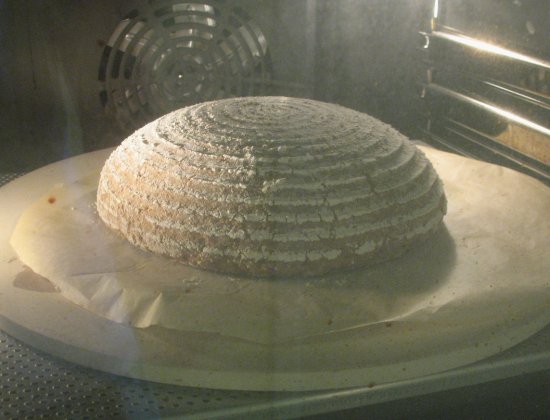
Although Hamelman suggests baking this dough in Pullman pans, he states in the sidebar that giant boules weighing up to 11 pounds are frequently baked in Germany. That's why I hoped that a free standing loaf could be pulled off, although there's not a speck of ordinary bread flour in the dough. All delicious chops, rye and whole wheat.
I guess scoring a heavy loaf like this would do more harm than good, so I left the razorblade alone for this one. After baking it just short of the hour mark, I pulled it from the oven:
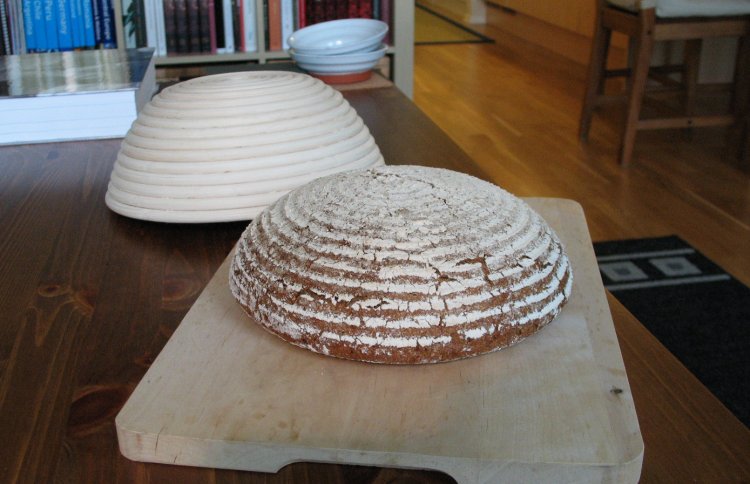
And another:
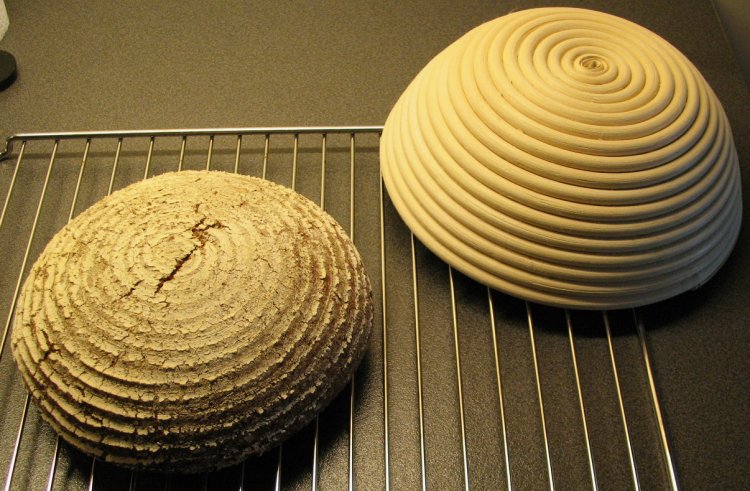
I was really happy with this formula, and taken by how quickly the dough came together and how straight forward it was to work with. Expecting sloppy wetness, I found a firm, relaxed dough. I'm thrilled by how it came out!

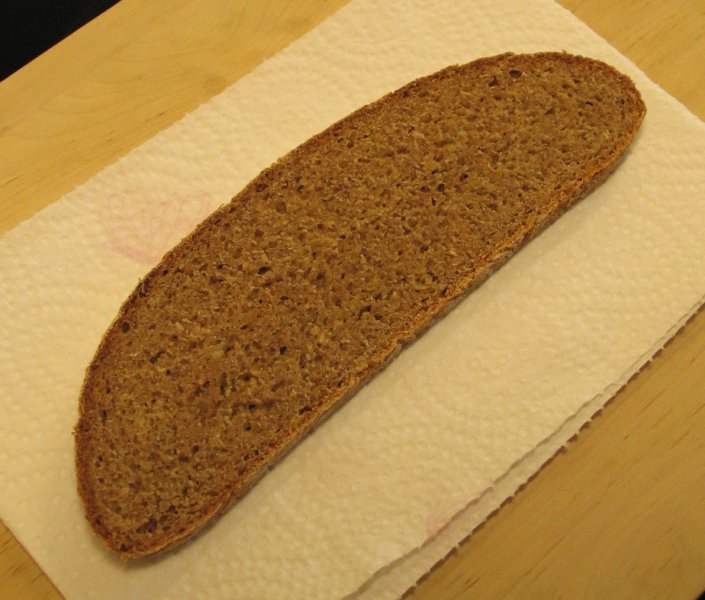
Now for something different:
Vincent Vega: "And you know what they call a ... a ... a Quarter Pounder with cheese in Paris?"
Jules: "They don't call it a Quarter Pounder with cheese?"
Vincent Vega: "No man, they got the metric system. They wouldn't know what the fuck a Quarter Pounder is."
Jules: "Then what do they call it?"
Vincent Vega: "They call it a "Royale" with cheese."
Jules: "A "Royale" with cheese! What do they call a Big Mac?"
Vincent Vega: "A Big Mac's a Big Mac, but they call it "le Big-Mac"."
Jules: ""Le Big-Mac"! Ha ha ha ha! What do they call a Whopper?"
Vincent Vega: "I dunno, I didn't go into Burger King."
Some months back, macarons, those tender, finnicky almond flavoured meringue shells sandwiched around a buttercream or ganache filling, seemed to be all the rage in the food blogging hemisphere. Magazine articles, websites, tutorials, heated discussions over which meringue method yields the toughest shell and the highest feet... and so on... I was taken by gorgeous food designer photos of these petit fours, and, with some practice, one can probably make sexy macarons with a shell as smooth as silk... I've just made my first batch of macarons, and I think I've learned a lot about their particular nature as I went along. First, I'm not going to get the ideal, smooth top shell since I'm not using finely ground almond flour - the item was nowhere to be found in any grocery store, so I settled on grinding blanched almonds as fine as my food processor would allow. I used a French meringue for the batter, and below is a photo of piped macarons resting for half an hour in order to get a surface crust:
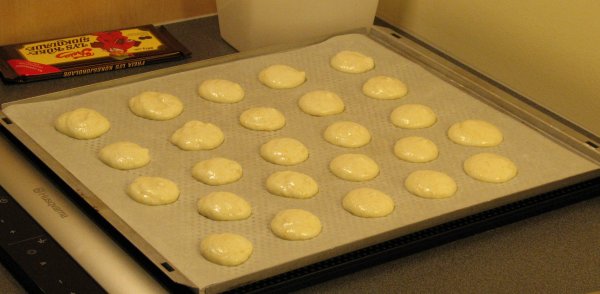
As you can see, they're a bit irregularly shaped (in a large part due to small chunks of almonds), and they've retained a little "beak", so I should've done a few more folds to get the "magma" consistency of the piped batter. While they were awaiting the oven, I could prepare the filling - a white chocolate ganache with raspberry preserves:
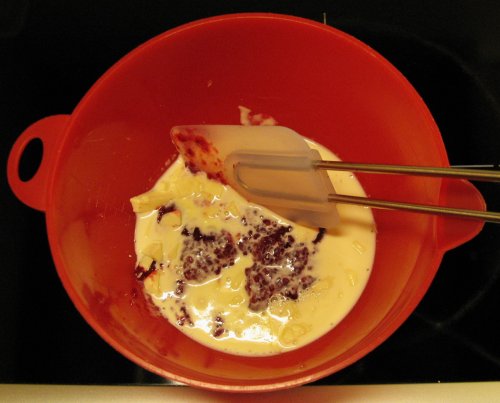
And here they are: They got feet, they didn't crack, and they were incredibly sweet... **not in one sitting** ;-)
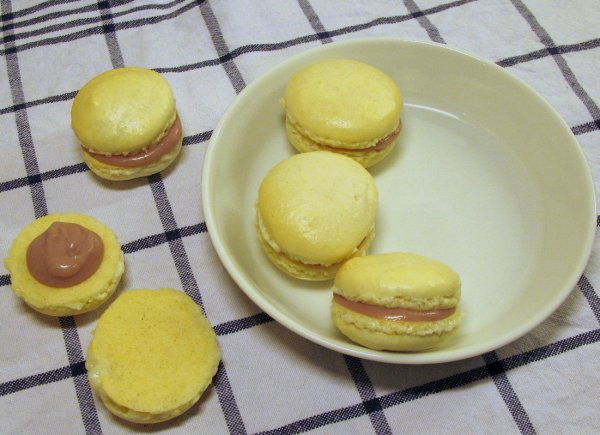
- hansjoakim's Blog
- Log in or register to post comments
Wonderful pictures, Hans. It looks divine.
--Pamela
Thanks, Pamela!
@ rockfish42: Will do. I'll try to have them up sometime tomorrow!
I've got the herring in the fridge waiting for that rye bread.
Nice story, hansjoakim. Inspiring loaf.
David
Hans, Lovely Boule and the photos are ... not finished..Ha,ha..just kidding..looking forward to your crumb shot of this wonderful bread!
Sylvia
Thanks David and Sylvia!
I too got herring in the fridge, David, but there should be enough slices here for the both of us.
When you make Hamelman's rye loaves, they're almost like quickbreads when you compare them to his levains. I mean, half an hour of initial floor time and then final proof no longer than it takes you to get your baking stone sufficiently hot. It's only then you realize that you'll have to wait another day before you can have any of it.
Looks wonderful hansjoakim. It is so tempting to cut into those high rye formula breads. Love the bread-Hate to wait! This is one of my favorites when I have the chops. Great post!
Eric
Thanks for the comment, Eric!
Those chops can be elusive, I know. How large do you usually scale loaves like this? The one above is roughly 1 kg, and I expect it'll keep me well fed the rest of the week...
You succeeded with the macarons!!!! Those are all the rage. The problem is that to me they are WAY too sweet so I won't even try them. Then I say to myself that I really should try for "professional curiosity". My daughter likes them but she's a sugar freak. So, I've just stayed with the idea that it's not the end of the world if I don't actually make them. Yours are a great success. Bravo!
.. but I'll take that gorgeous rye over them.
Jane
Thanks for the comment, Jane!
You know, I wasn't expecting anything at all after reading page up and page down at web sites about macaron disasters! But all of a sudden they just sat there, looking all nice and perky :)
I'm thinking it's beginner's luck, because there are so many variables involved in making them. I think using aged egg whites (mine came from the freezer, thawed in the fridge and then kept at room temperature for two days) and being really careful not to overmix the batter are the two most important things to keep in mind. I also think fan assisted baking is a plus, as the heat is more even during the brief bake.
But you're absolutely right: These creatures are ridiculously sweet!! *brrr...* I'm all for sweet stuff, but these were... ok... uhm, a bit much. Your daughter must have a serious sweet tooth, Jane?
The only thing is, when you see macs over at the pro food designer/photographer folks' blogs, they're little pieces of art. And the whole Hermé vs. Ladurée macfight adds a peculiar twist too ;)
Well... I've eaten two macs after baking them this afternoon, and I'm pretty much content with that. I honestly don't know what to do with the rest of them...